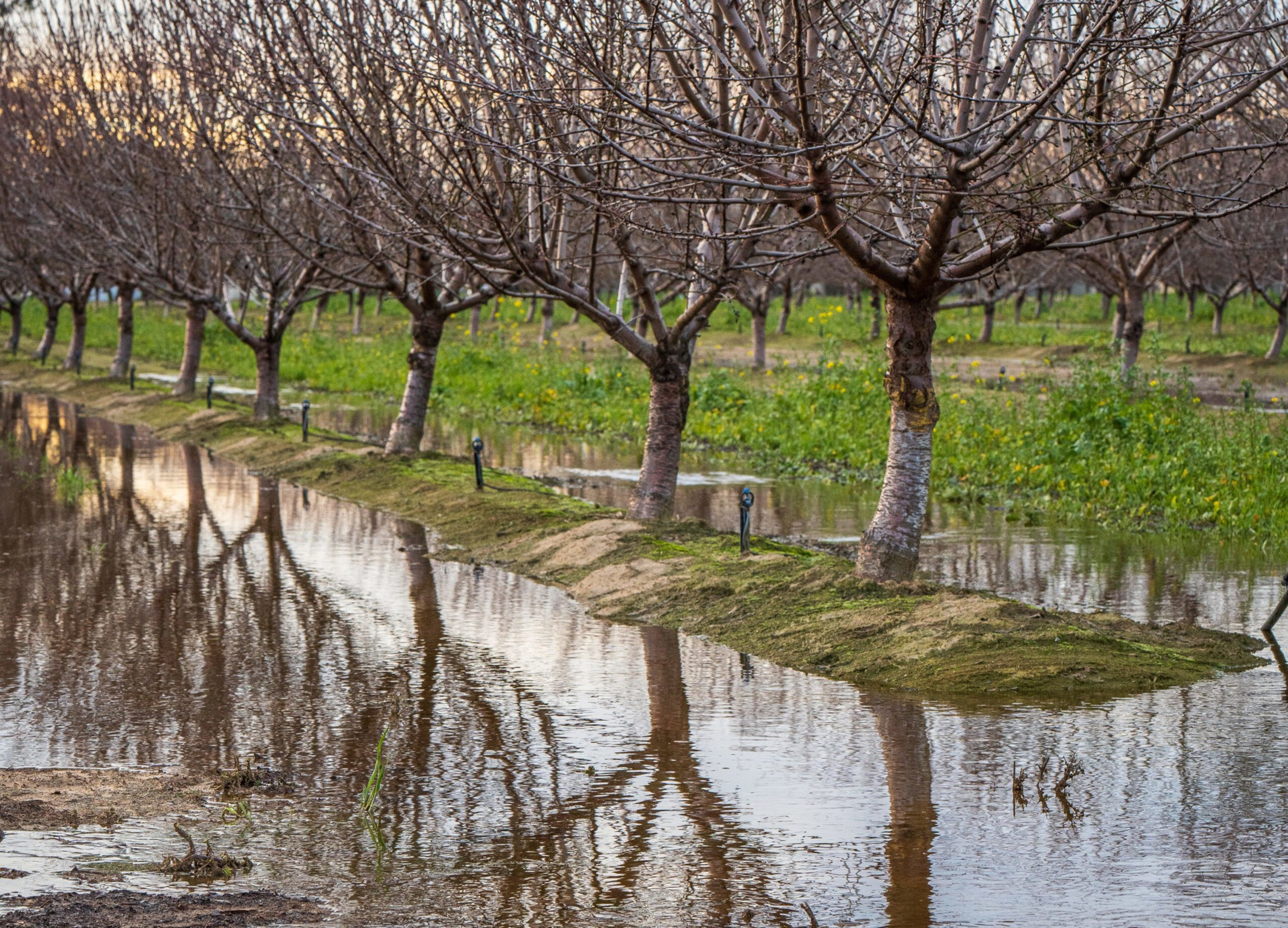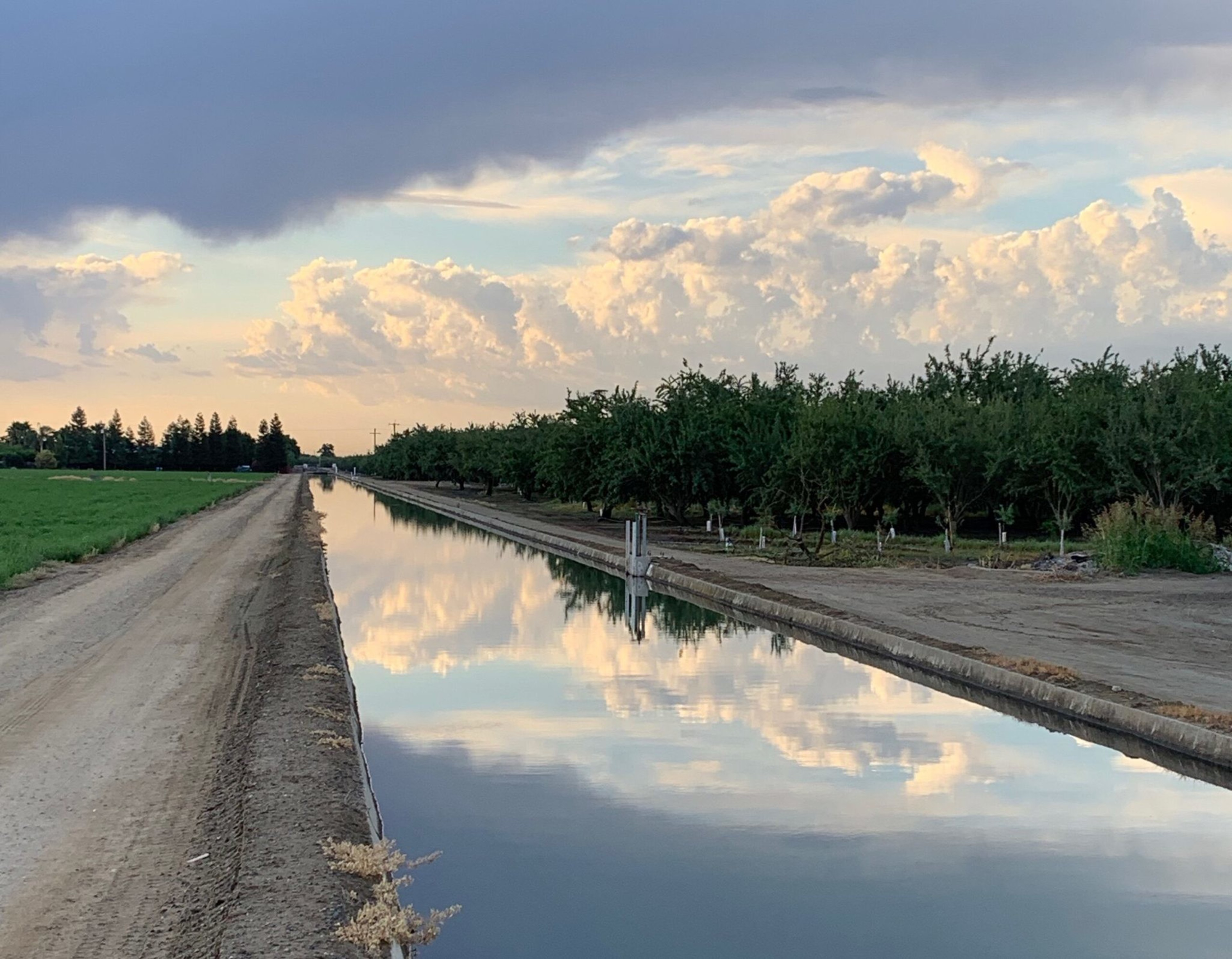A slew of intense winter storms battered California and flooded parts of the state. Devastating floods in some of the state’s agricultural regions could cause catastrophic effects for California’s $3 billion strawberry industry (opens in new tab), and flooding in Monterey County’s Pajaro has left the local farming industry “in limbo (opens in new tab).”
Almonds—perhaps California’s most morally divisive crop (opens in new tab)—have likely not escaped injury from the deluge, despite a single nut needing 1 to 3 (opens in new tab) gallons of water to grow (opens in new tab). Farmers instead warn the upcoming harvest might not produce enough nuts to meet demand.
California is the world’s largest producer of the nut, contributing 80% of the globe’s almond supply (opens in new tab) in 2020. Almonds raked in around $5 billion for California’s farmers in 2021 (opens in new tab).

‘The Water Bad Guy’
Let’s get one thing straight: Almonds are not actually the thirstiest crop when it comes to water usage. Other staple crops actually use more water per acre, and rarely receive the scrutiny almonds do, according to Ellen Bruno, a UC Davis agricultural economist.
“[Almonds] are high water users, in the sense that there’s a ton of acreage of almonds throughout the state,” said Bruno. “But on a per-acre basis, they’re not the biggest water guzzlers. It’s been kind of peculiar how everyone has latched onto almonds as being the water bad guy.”
Bruno says other crops like alfalfa—often used as feed in the dairy industry—are bigger water users. One study found that the dairy industry uses (opens in new tab) anywhere from 433 to 11,110 liters of water to produce a single liter of milk.
The fixation on almonds stems from the fact that they’re mostly grown in California, a state that has struggled with a years-long drought (opens in new tab). Some link the state’s sprawling agricultural industry to worsening drought conditions, placing blame on perceived water-heavy crops like almonds.

Heavy Rain Doesn’t Mean More Almonds
Although heavy rains replenished the California water supply and the precipitation is likely good news for agriculture overall, almond growers say the storms disrupted a critical time for their crops.
“Bees are the ones that pollinate these [almond] trees, and the crop is very much dependent on the movement of pollen from one flower to the next,” said Christine Gemperle, who runs an almond farm that spans 1,000 acres (opens in new tab). “Lots of rain, lots of wind, no bees flying, possibly low temperatures—these are going to have an impact on how many nuts actually got pollinated.”
WATCH: How Will Historic Rainfall Impact California’s Drought?
Almond trees normally bloom (opens in new tab) in mid-February, when the tree’s flowers open for a two- to three-week period. In this crucial window, bees pollinate the trees and little nutlets will then form. By August, most almond trees in California are ready to harvest.
Disrupting the delicate pollination cycle could have disastrous effects on California’s 2023 crop, and not just for almonds.

“When you lose a planting cycle, it’s not just, ‘Oh, they’re one or two weeks behind,’” Gemperle said. “We’re talking months, a whole cycle of food that has [been] missed or lost.”
Still, the California Almond Board (opens in new tab) says it might be too early to tell how much of the almond crop will be affected by the extreme weather, especially since some nut varieties may have bloomed after the heavy rainfall.
“We probably won’t be able to tell until trees start to form nutlets in a month or two,” said Almond Board spokesperson Rick Kushman. “We’ll get our first real look at the fuller picture when the U.S. Department of Agriculture’s Subjective Forecast comes out May 12.”
Will the Price of Almonds Go Up?
So will the disrupted almond cycle affect the price of these nuts? Yes—but potentially not in a way that everyday consumers would notice.
“Because that weather came at a really critical stage in the annual production cycle, it raised a lot of questions about whether the size of the crop will be affected,” said Michael Easterbrook, managing director of Stratamarkets, a nut price indexing company. “As a result, prices shot up pretty quickly.”
Easterbrook estimates that almond wholesale prices went up 25 to 50 percent in late February, after the first spate of storms hit California. He says prices have leveled in recent weeks, but attributes the bulk price hike to the extreme weather.
Easterbrook is talking about the bulk wholesale price for almonds—not the retail price for, say, a bag of nuts or a carton of almond milk at the grocery store. Instead, almond retail prices may fluctuate based on numerous factors, including regional pressures or inflation.
“What happens at the retail level is completely independent from what happens in the wholesale market,” Easterbrook said. “The retailers may decide to adjust their prices based on what they’re paying in that wholesale market, but they may decide that they don’t want to.”
Recent storms have incentivized farmers to increase water efficiency practices. Studies estimate that almond growers have reduced almond per-acreage water usage by 33%, (opens in new tab) and plan to improve it by another 20% in two years.
Gemperle, the Central Valley almond farmer, says she’s irrigated her orchard at least three times since January, a practice that helps “recharge” groundwater (opens in new tab) without damaging her almond trees. This essentially saves up water in underground aquifers for future months, when rain might be in short supply or drought conditions return.

In the meantime, as Californians recover from hurricane-level winds and severe flooding, farmers in the Central Valley and across California may have to adjust to a new climate normal that accounts for all the recent extreme weather events.
“We’re learning this is our future, and we need to adapt to it,” Gemperle said. “We have to adapt to unpredictability because the unpredictability is the only thing that’s predictable now.”
